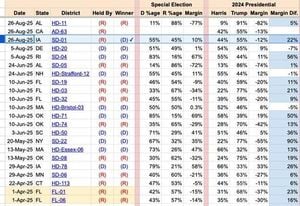For the first time ever, Tasers are being introduced into adult male prisons across England and Wales as part of a new government trial aimed at tackling soaring levels of violence. Announced on July 28, 2025, this pilot program equips specialist officers from the Operational Response and Resilience Unit (ORRU), based in Kidlington, Oxfordshire, and Doncaster, South Yorkshire, with the same stun guns currently used by police. Justice Secretary Shabana Mahmood, who visited the Kidlington base to witness a demonstration, emphasized her commitment to "keep prison staff safe" amid what she described as "completely unacceptable levels of violence" in the prison estate.
The trial will see these highly trained officers deployed to handle complex and dangerous incidents like hostage situations, riots, and mass disorder where there is a clear threat to safety. Officers demonstrated scenarios involving disruptive inmates, including one where three prisoners turned on a fourth in the exercise yard, prompting a Taser deployment after verbal warnings. The Taser 7 model used in the trial can generate 50,000 volts when fired, dropping to around 1,500 volts upon contact to incapacitate the target. It is a two-shot weapon, allowing officers to fire a second shot if the first misses, and is carried visibly on tactical vests in secure holsters, serving as both a deterrent and a data-collection device to aid the trial's evaluation.
Violence in prisons has been escalating dramatically. Government data show that assaults on staff hit record levels in 2024, with 10,605 reported incidents—a 13% increase on the previous year and the highest ever recorded. Serious assaults rose by 10% over the same period. The 12 months leading to September 2024 saw a 23% rise in staff assaults, reaching 10,496 cases. These figures underscore the urgent need for new safety measures.
High-profile violent incidents have intensified calls for stronger protections. In April 2025, Hashem Abedi, the brother of the Manchester Arena bomber, launched a brutal attack at HMP Frankland in County Durham, using scalding oil and improvised weapons to injure four prison officers, three of whom required hospital treatment. This incident, described by Ms Mahmood as having "forced the pace" of further measures, highlighted the dangers faced by prison staff. Shortly after, Southport killer Axel Rudakubana allegedly poured boiling water over a staff member at HMP Belmarsh, further illustrating the escalating threats inside prisons.
Currently, prison officers have access to batons and Pava spray, a synthetic incapacitant similar to pepper spray, with limited rollout to specialist staff at young offender institutions announced earlier in 2025. The Taser trial is part of a broader £40 million security package unveiled in June 2025, which also includes £10 million dedicated to anti-drone measures such as reinforced windows and new netting to prevent contraband deliveries.
Justice Secretary Mahmood stressed the importance of learning from this initial trial, noting that "a custodial setting is different to usage in other scenarios" like policing. She plans to review data collected during the trial and provide further updates in the autumn of 2025, including considering whether to extend Taser use to local prison staff beyond the specialist units.
The Prison Officers’ Association (POA) has welcomed the trial but voiced concerns that it only addresses symptoms rather than root causes of violence. Mark Fairhurst, the POA’s national chairman, pointed to overcrowding, understaffing, drug abuse, and a lack of prisoner activity as fundamental issues fueling unrest. "Prisons have been overcrowded for decades, which leads to a lack of activity spaces for prisoners leading to boredom, drug abuse and violence," he said. The union also advocates for protective equipment such as stab vests, arguing that relying solely on national specialist units for Taser deployment is inadequate. "It is pointless a national response being several hours away if, locally, Taser is needed to immediately preserve life and combat threat," Fairhurst added.
Former prison officer Claire Lewis, who suffers from severe PTSD after being stabbed 15 years ago, supports the limited use of Tasers in planned extractions or wing assaults but also campaigns for stab-proof vests for all officers. "If I'd have got a vest on when I was attacked, I would not have received the serious injury I did to my back—it narrowly missed my spinal cord," she explained.
Despite these calls, the President of the Prison Governors' Association, Tom Wheatley, cautioned against a widespread rollout of Tasers to all officers, citing the risk of the stun guns becoming weapons in the hands of inmates if seized. "If they were issued to all officers on a daily basis, it could carry additional risk," he said.
The Ministry of Justice has committed to robust accountability measures, with every Taser deployment subject to review. The trial's outcome will guide future policy decisions, balancing the urgent need to protect staff with concerns about safety and effective use within the prison environment.
As the trial unfolds, the government faces the challenge of not only equipping officers with better tools but also addressing the systemic issues that have led to a crisis of violence behind bars. The stakes are high, with thousands of assaults annually and prison staff risking life and limb daily. The introduction of Tasers marks a significant shift in prison security policy, but whether it will be enough to turn the tide remains to be seen.






